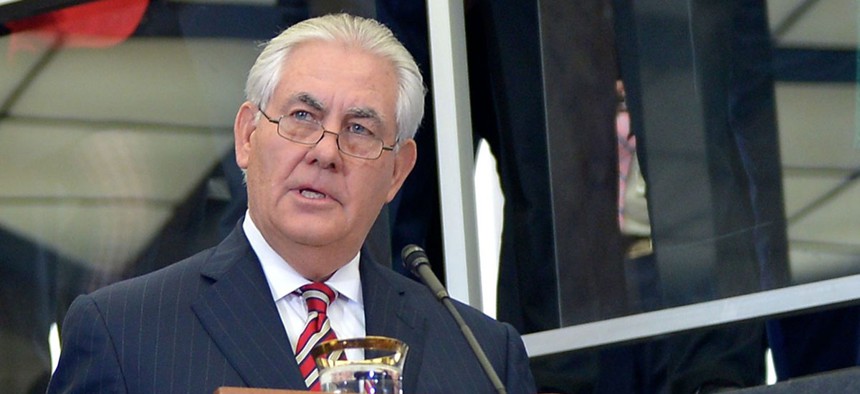The Top U.S. Diplomat No Longer Receives Visits From Other Top Diplomats
Secretary of State Rex Tillerson was only told about the Mexican foreign minister's visit the night before and didn't get to meet him.
In normal times, a visit by the foreign minister of one of America’s closest allies would be coordinated by the State Department from start to finish, with a meeting between the minister and the secretary of State in the midst of it.
But in US president Donald Trump’s Washington, not only did secretary of State Rex Tillerson not meet Mexican foreign minister Luis Videgaray on a March 9 visit; his chief spokesman didn’t even know Videgaray was in the city. Mark Toner told reporters who asked about the visit:
Good question. We’ll take that and get back to you. I was unaware that he was—the foreign minister was in town. And I’m not sure—I can’t speak to whether there’s going to be any meetings at the State Department at any level.
The Los Angeles Times then reported that that Videgaray had called Tillerson “the night before to let him know he was arriving in Washington.” But Videgaray met Trump’s son-in-law, Jared Kushner, in the White House instead. In an official statement (link in Spanish), Mexico’s foreign ministry didn’t mention Tillerson or the State Department either.
This is astonishing. Tensions between the US and its southern neighbor are at a decades-long high; there are crucial talks over trade deals and mass deportations. But the US’s chief diplomat, the globe-trotting former CEO of oil giant Exxon Mobil, is excluded from his counterpart’s visit, and informed only as an after-thought.
This plays into a narrative that has grown from whispers among worried diplomats into shouts in national op-eds: the State Department is being shut out, and the White House—in particular, Kushner—has taken over foreign policy.
The department itself seems rudderless and uninformed. After Trump rejected his choice of deputy, Tillerson, a political neophyte, still has no “sherpa” to guide him through its complex workings. The fact that he himself didn’t tell his spokesman about Videgaray’s trip speaks volumes.
Until Toner restarted them this week, the department’s daily press briefings—a tradition dating back to the 1950s—had been suspended. That deprived diplomats in embassies across the world of messaging on the administration’s stances. Sources at State say that, at least until the end of February, all press releases had to be cleared through the National Security Council—not unknown during a transition, but it certainly clogs up the information flow. Tillerson has dealt himself another self-inflicted blow with the highly unusual move of traveling to North Korea without a press corps.
Not bringing press on a trip like that is unusual & insulting to any American who is looking for anything but a state-run version of events
— Jake Tapper (@jaketapper) March 9, 2017
Unsure what they should be doing under Trump, diplomats have been continuing with old policies and toning down their language when they’re unsure. With precious little work to do, career foreign service officers instead spend their time fretting in Foggy Bottom’s cafeteria about whether the diplomatic corps will be turned into a visa-stamping machine.
Update (3:20 pm ET): White House spokesman Sean Spicer said the department had been making “cost savings,” which meant Tillerson’s plane couldn’t carry journalists, but “they are making accommodations in the future with the size of the plane.” it was not clear why Tillerson couldn’t use one of a number of other adequately-sized planes often used for congressional delegations.



